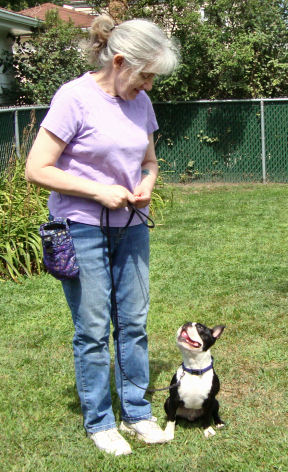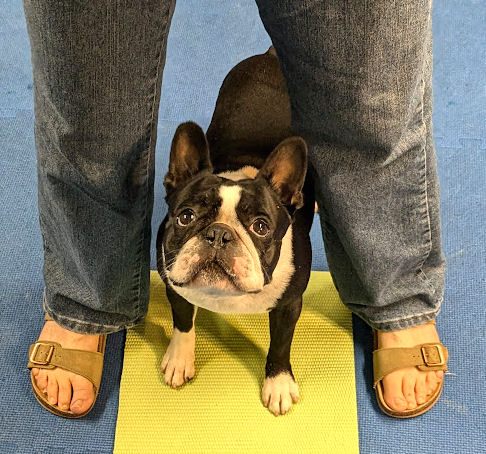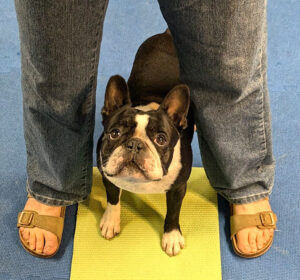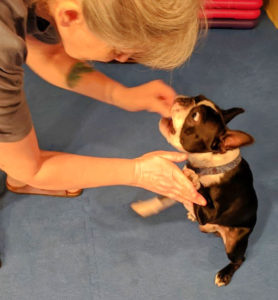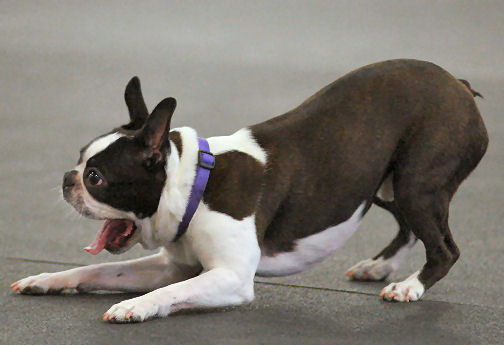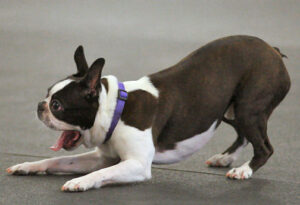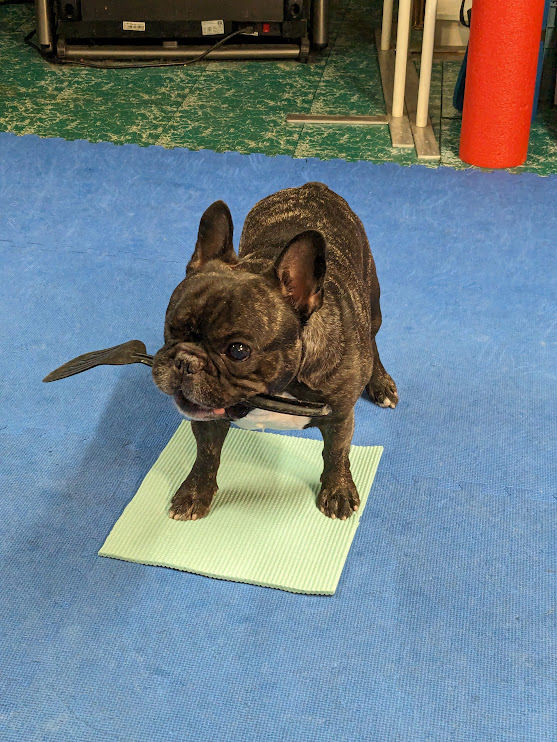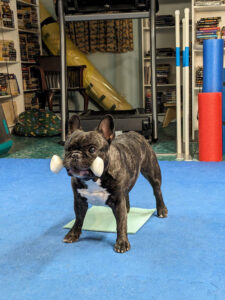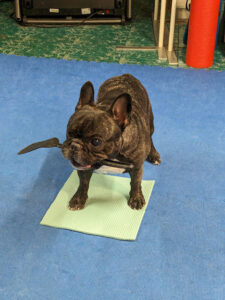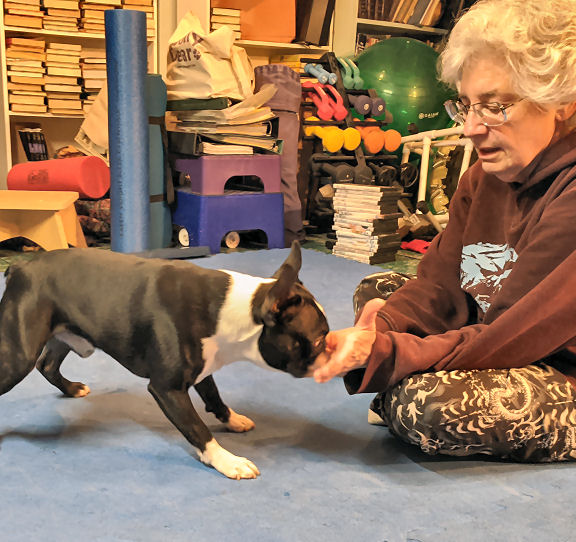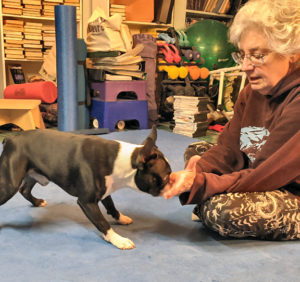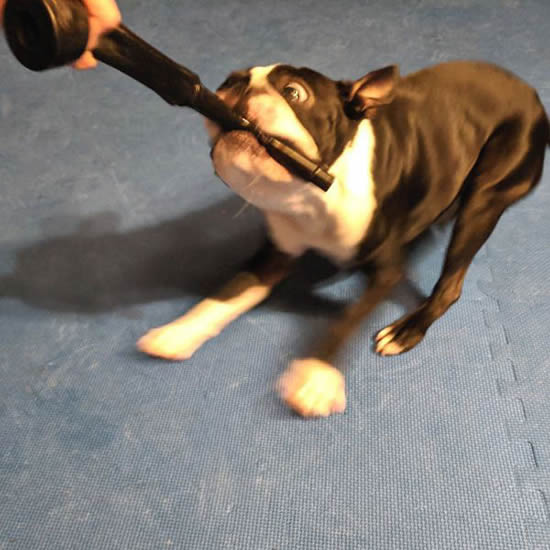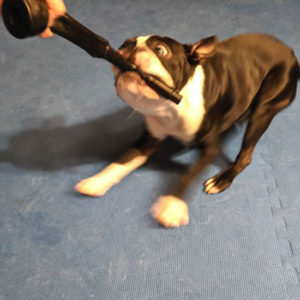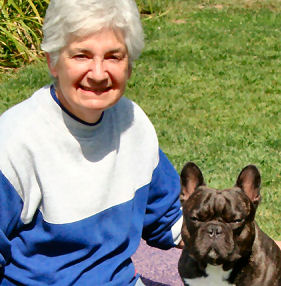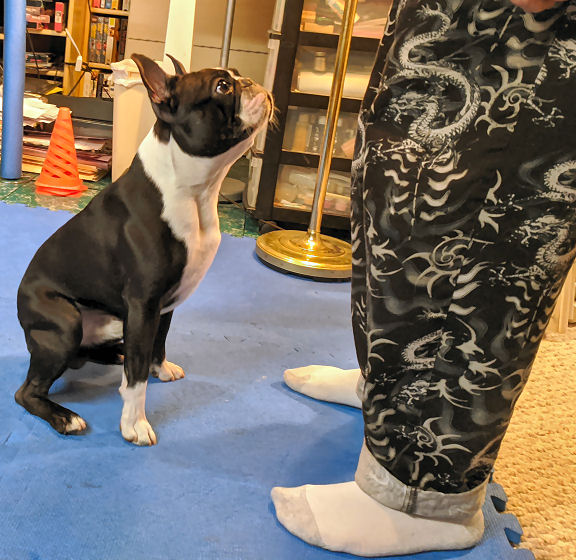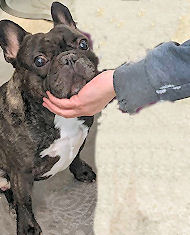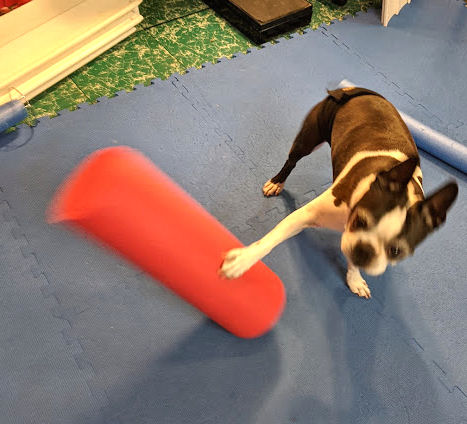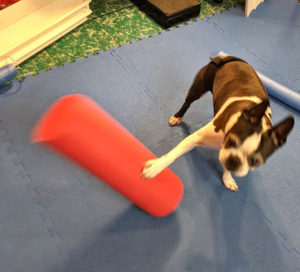Puppy Push-ups is our absolute favorite dog training game. Every class we teach, from Puppy Basics to Competition Obedience, starts with everybody doing Puppy Push-ups with their dogs.
Why? The game is fast. It’s fun. And, it’s the best game for teaching dogs the position words. Dogs love it because there’s a high rate of reward. And everyone who interacts with your dog will love that your dog knows Puppy Push-ups.
What is Puppy Push-ups?
Puppy Push-ups is just a random, rapid sequence of “Sit!”, “Stand”, and “Down.” The faster you play, the more fun it is for everyone.
Most Puppy Push-ups games alternate only between “Sit!” And “Down!” With only two positions to choose from, dogs may not understand the words. They just know if it’s not this one, it’s that one. By adding the “Stand!” To the mix, your dog actually listens. They learn which word means what. Most dogs aren’t taught “Stand!” But we don’t know why. Your dog’s groomer and veterinarian will love it. And so will you.
How to teach the positions
Dogs learn by the timing and placement of rewards. In this case, they already know “how,” so that’s not a problem. What we have to teach is associating the word with the position.
This is one of the few cases where we actually will lure the dog in order to get them to move into the right position. This is where the timing and placement of rewards comes in.
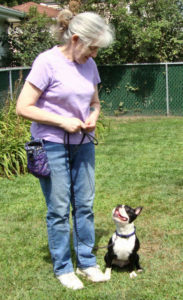
For the “Sit!”, hold a treat at your dog’s nose and slowly move it up and slightly back. Dog’s anatomy dictates that when the head comes up, the butt goes down. As your dog’s butt hits the floor, tell them it’s a “good Sit!” Or “That’s Sit!” Be sure you use the position word “Sit!” Almost everyone says “Good girl (or boy)!” Instead of “good Sit!” To teach the word you have to use the word.
For the “Stand!” hold a treat at your dog’s standing nose level and slowly move it away from your dog, keeping it at the same level. Most people move too quickly and don’t give their dogs a chance to get their hind end moving. Be patient. Hold the treat level and steady, but don’t give it to the dog until they’re actually standing. Same deal – be sure to say “Good Stand!” Not “Good Dog!”
“Down!” Is rewarded between the dog’s front legs as they’re lying on the floor. Again, start at the dog’s nose level and slowly bring it down to the floor. Be patient – stay exactly where you are until your dog is actually lying down.
What could go wrong
The most common issue is the dog not sustaining any position after the reward is delivered. Avoid this “one and done” syndrome by giving your dog multiple rewards for maintaining the position. Have two or three treats ready. If your dog stays in position, keep rewarding and saying “That’s Sit!” Or “Good Sit!” (Or Stand! or Down!). Then either give them another position or say their release word.
At first, give your dog a reward for every single position change. And as your dog learns the game, speed it up. The faster it goes, the better. It gets more fun for both of you. Be sure to randomize the three positions. It will show you whether your dog truly knows the words or if they need more practice.
That practice is easily incorporated into your daily life. Have a container of treats in every room in the house. When you enter a room, notice what your dog is doing, name it and reward it. It won’t take long for your dog to learn the words.
Throw in some curves
Once you’re pretty sure your dog knows Puppy Push-ups, you can start changing it up to keep it new and interesting. Try it with your dog beside you. Or between your legs. Even try it with your dog behind you. Build distance. How far away can you be and still have your dog do their Push-ups?
Dogs start loving this game pretty easily. They don’t have to do anything scary or new. They get lots of treats. And it makes you happy.
You can use Puppy Push-ups anywhere and anytime you need your dog’s attention. Or when you want them to switch gears into “work” mode. That’s why it’s a great start for every dog training class.

